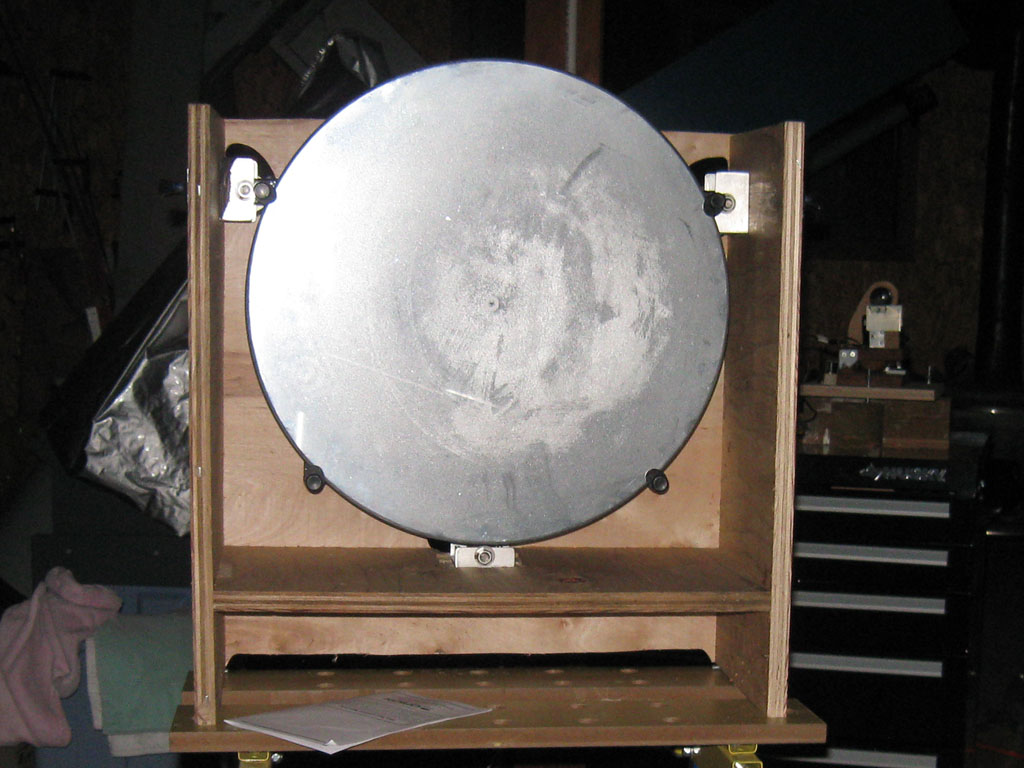
Cal Poly 18 Bulletin 13
2012-10-30 Image Quality Quandry
The Cal Poly had a quiet summer. I disassembled the optics to investigate the distorted images (see Bulletin 12), and my CCD camera found employment in imaging tasks on other telescopes. This bulletin reports on my efforts to diagnose and correct the optics. Briefly, during the day the Cal Poly warmed up, so at sunset the Cal Poly was elevated above the ambient air temperture. As darkness fell and the temperature began to drop, captured images were typically 4 to 6 arcsec diameter smears with a tail sticking off to one side. The mirror was cooled by two 3.5-inch fans blowing outside air between its two plates. Out of focus images were strongly asymmetric and distorted. By midnight the tail would disappear and the image core would contract, but never smaller than 3.5 arcseconds FWHM. This pattern occurred when the tube was an open truss, and still occurred when I closed the tube to reduce scattered light. While my location is seldom blessed with excellent seeing, sooner or later there should have been a fine night with tight, tiny star images.
In a Newtonian, image faults must lie with either the primary or the secondary, or both. Both are non-standard mirrors. The primary was donated to the Cal Poly project by Tong Liu of Hubble Optics. It is two 3/4-inch think plate-glass disks spaced with a large number of 3/4-inch thick standoffs each 3/4-inch in diameter. The front and back disks are offset by about 6 mm, that is, they are not concentric. The secondary is a 6-inch minor axis borosilicate ellipse that is also a built-up and fused structure. I tested each in a bench-test set-up and on astronomical objects. Details and photos follow.
Primary Mirror, Bench Testing
To make the primary easier to handle and to assess the performance of the mirror cell, I constructed a handling jig from plywood. Mounted in the handling jig, the mirror and cell could be moved, set up for testing, and easily worked on. I tried to test the primary with a standard Foucault test, but the deep curve had such a large delta-R, it made accurate assessment of the curve difficult. Visually, the figure was smooth and symmetrical both with a knife-edge and with a Ronchi screen.

In the photo above, it is clear that the aluminum coating on the mirror is in poor shape. I attribute this to three causes: 1) While at TMS, fine metallic and other workshop dust accumulated on the mirror surface, 2) at my location, the mirror was prone to getting wet from condensation in the morning because the mirror remained cold while the air temperature and the humidity rose, and 3) the coating appears to have been unprotected aluminum. Illuminated from behind, the coating is full of holes and sleeks.
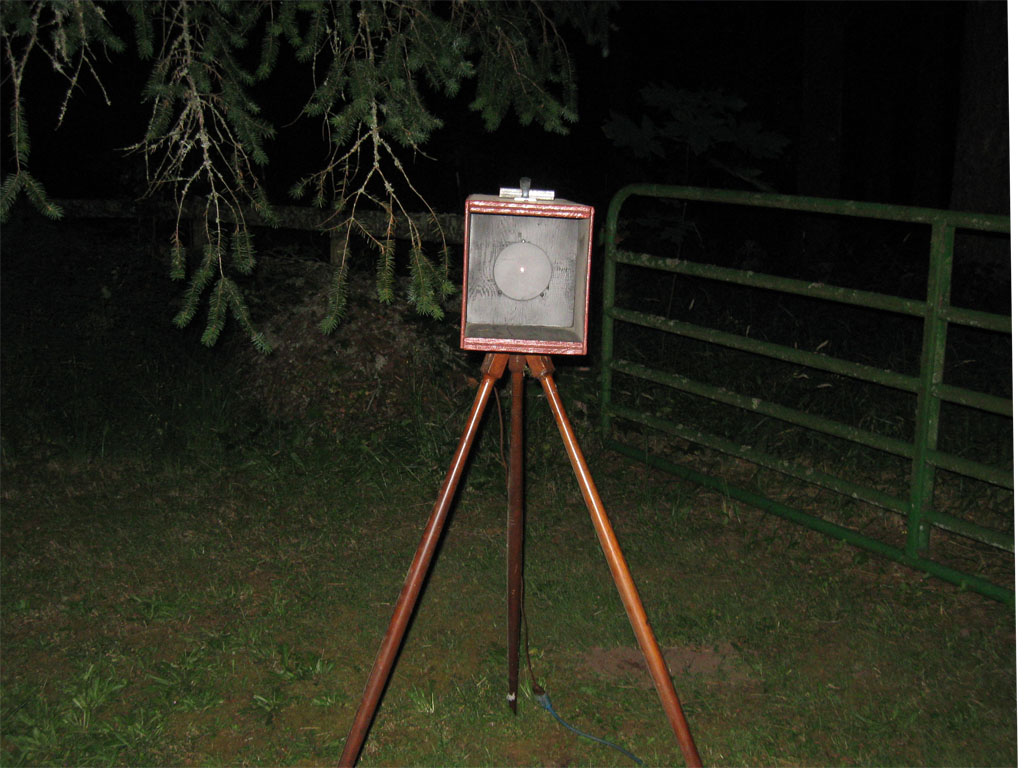
The method I found effective for testing was a null test with an artificial star approximately 120 feet distant. The mirror was placed in my shop building; the light source was outside.

The light source was bright enough that the camera tripod and a focuser mounted on it cast a readily visible shadow on the mirror. The photo below shows the shadow of my head, a camera tripod, and a focuser mounted on the tripod head.

Below is the focuser with a laser collimator. The focuser is shown nearly centered on the center dot on the mirror.

In the photo above, you see the focuser with an alignment laser mounted in it.
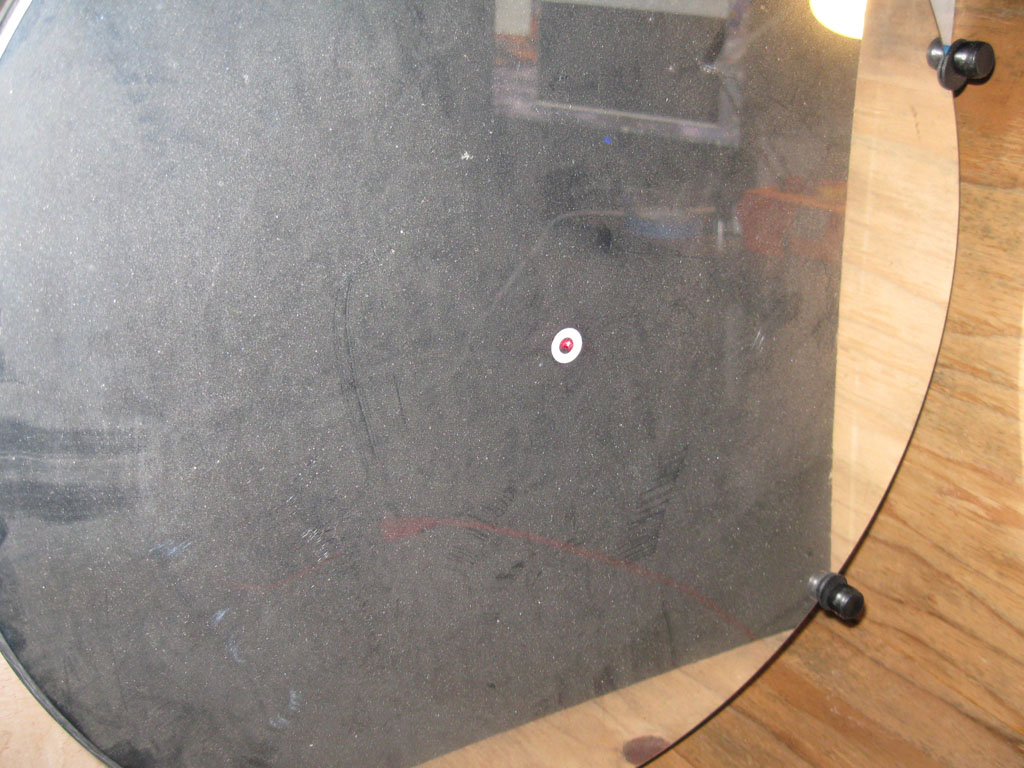
Here the laser dot is centered in the center dot. The mirror was then adjusted to return the laser beam to the alignment laser target.
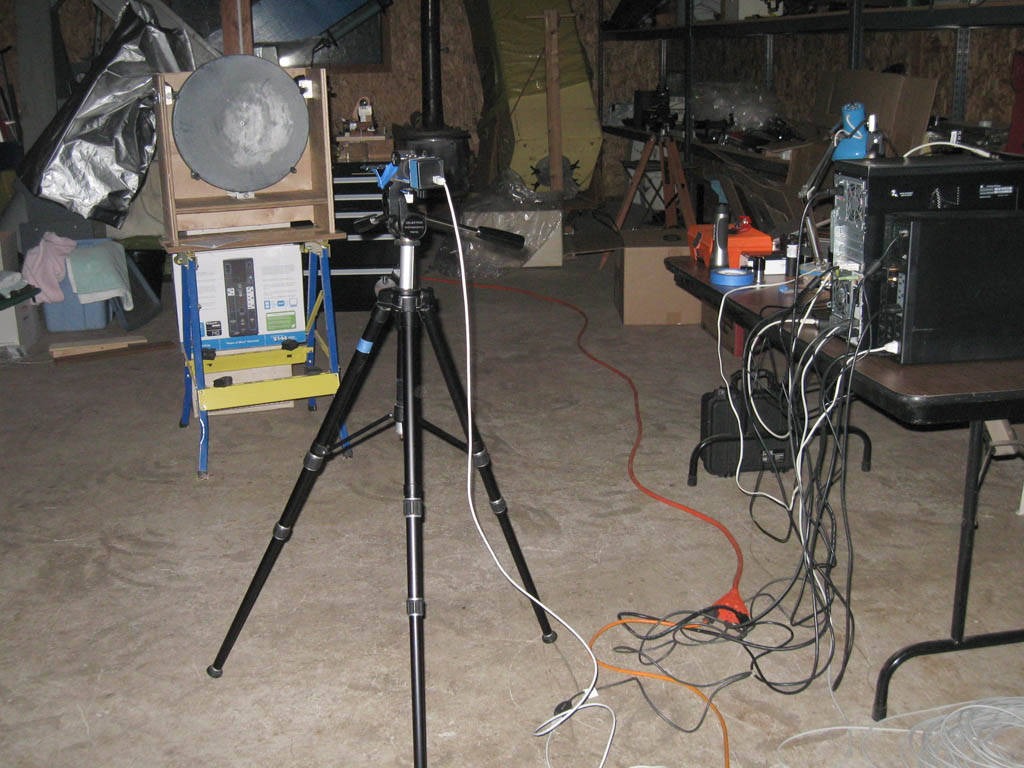
Above is the operating test set up. I have placed a DMK41 video camera in the focuser. Although it is necessary to reach into the incident light beam to adjust the focus, this was not a big problem. I was able to see clear, sharp image through focus and in focus on the computer screen.

By available light, here's what the test looked like.
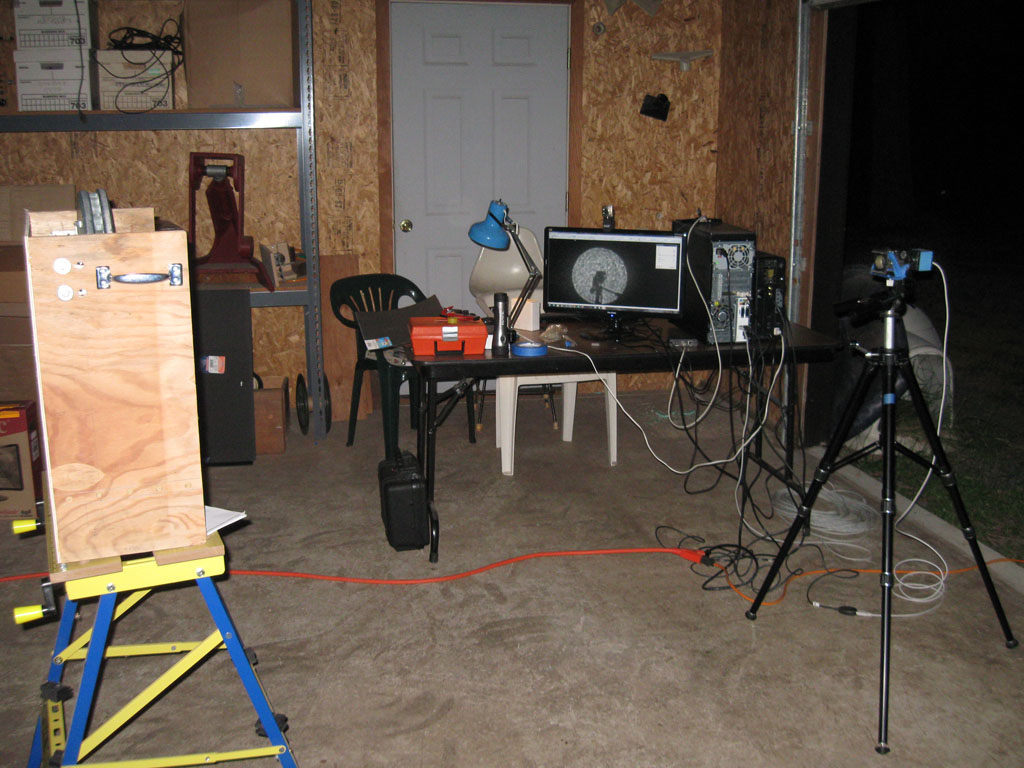
By flash, you can see the set up and the video image on the computer screen.
This test never showed distorted or asymmetric images either in focus or on either side of focus. Since the DMK41 has 4.4-micron pixels, if distortion had been present, I am fairly sure I would have seen it. I ran this test on three nights. Unfortunately, in making this measurment of the mirror's figure, I was not able to arrange to cool the mirror rapidly. Using a fan to blow chilly outside air into the relatively warm shop did not move enough air to affect the mirror's temperature, but did introduce a huge amount of turbulence.
Conclusion: this test failed to reveal obvious distortion or asymmetry in the figure of the primary mirror.
Primary Mirror, Sky Testing
My other method of testing the primary was to view its star images without the diagonal mirror. This entails placing an eyepiece at the primary focus, and then placing your head and shoulders in the incoming beam of light to view the image: not good. Here's the set up shown below:
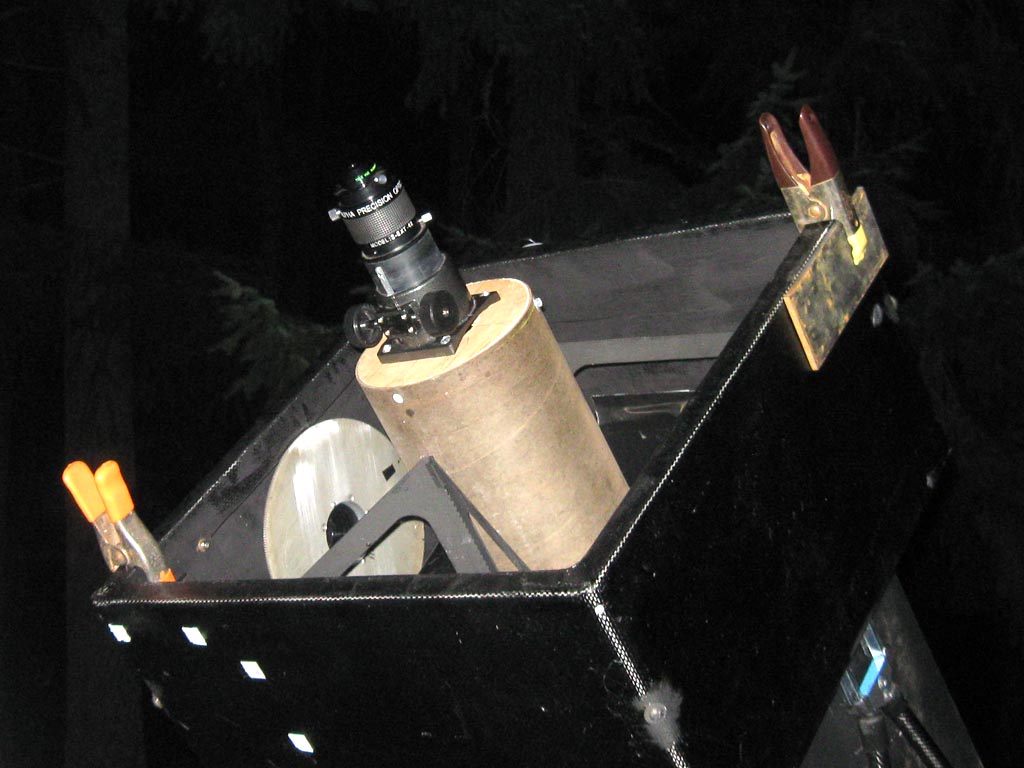
I found a plasticized fiber tube that fit tightly over the diagonal holder. I cut a wooden disk that fit tightly inside the tube and mounted a spare focuser in the tube. The disk was held by three sheet-metal screws, one through a tight hole and the other two through slots. I inserted the laser alignment tool, aligned the focuser so the dot fell on the center of the mirror, then aligned the mirror. Using 26mm and 10mm eyepieces, I examined star images in focus and on both sides of focus.
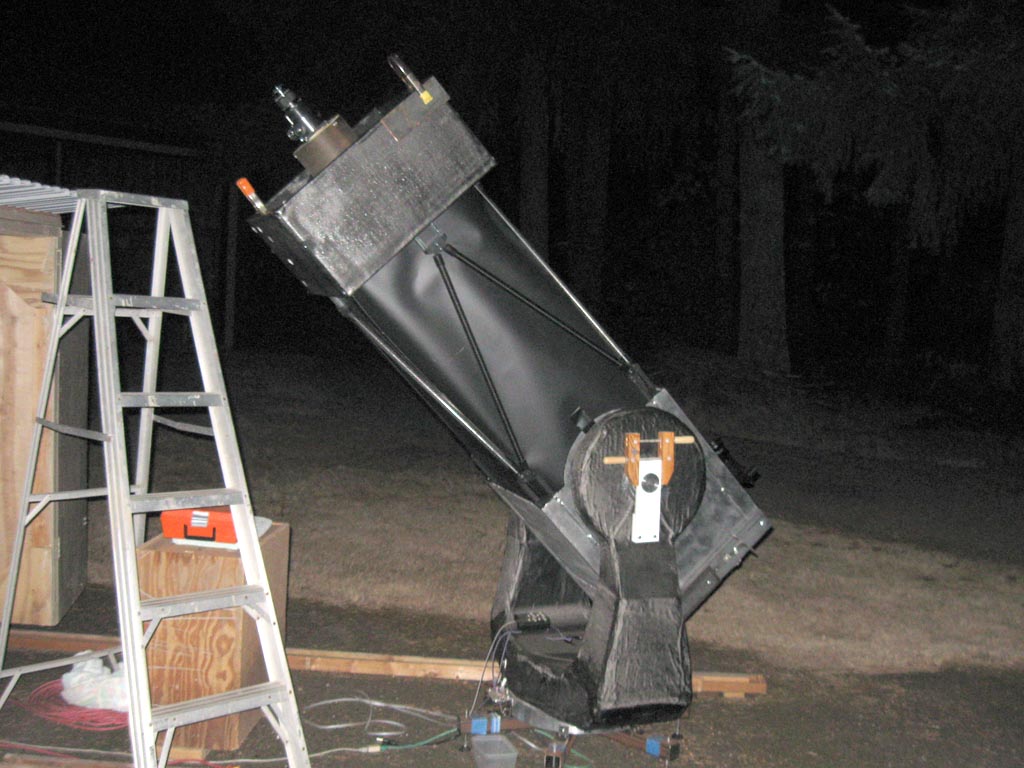
The photo above shows the arrangement.
Visual observation beginning in the early evening and continuing until midnight showed undistorted and round out of focus images. In focus there was some scattered light that I attribute mostly to the poor condition of the aluminum coating. With the 10mm eyepiece at 220x, I was able to split both components of epsilon Lyrae -- despite the messy diffraction pattern caused by the intrusion of my head and shoulders in the beam.
Conclusion: this test failed to reveal distortion, asymmetry, or figure changes as the mirror cooled.
Primary Mirror, Bench Testing
The photo below shows the secondary mirror and its mount. It is about 12 mm thick with a minor axis of 6 inches; the structure is backed by ribs fused to the approximately 8 mm thick. At three points the ribs meet at a tube with an inner diameter of about 10 mm. Into each of these, a rubber cylinder with a 6-32 bolt in the center is inserted; the rubber cylinder is slightly compressed to grip the diagonal. Originally these were much tighter; I relaxed the compression until it was just sufficient to hold the mirror in place.
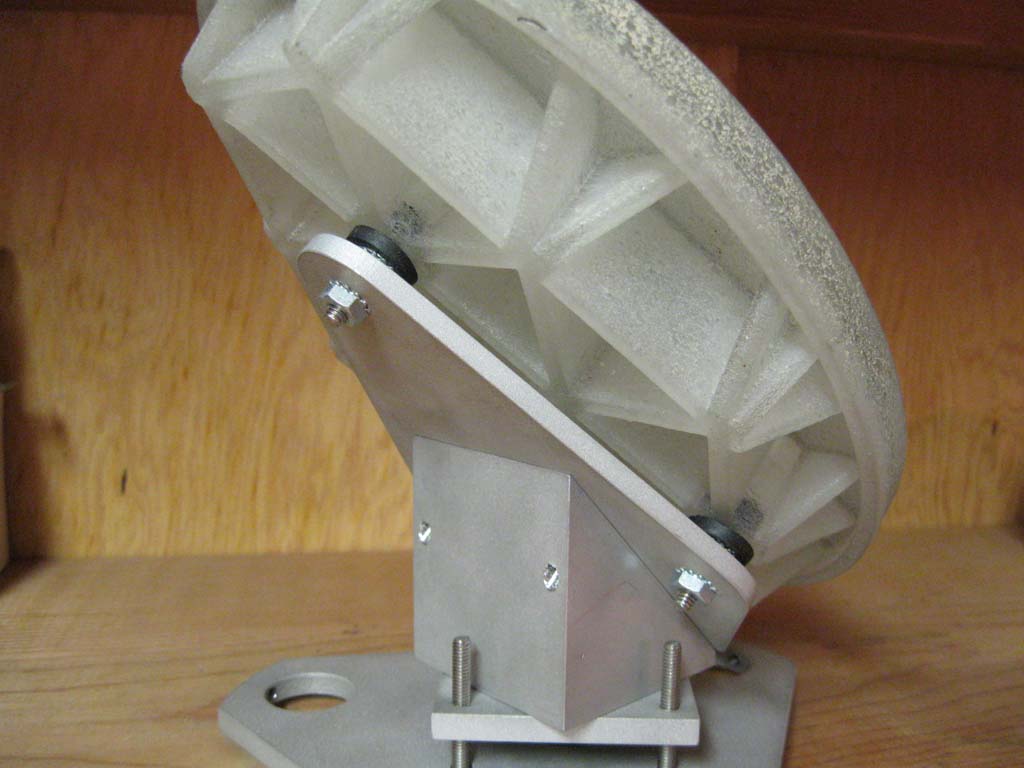
Below is the Foucault test setup. The 6-inch sphere was tested and found to null cleanly.
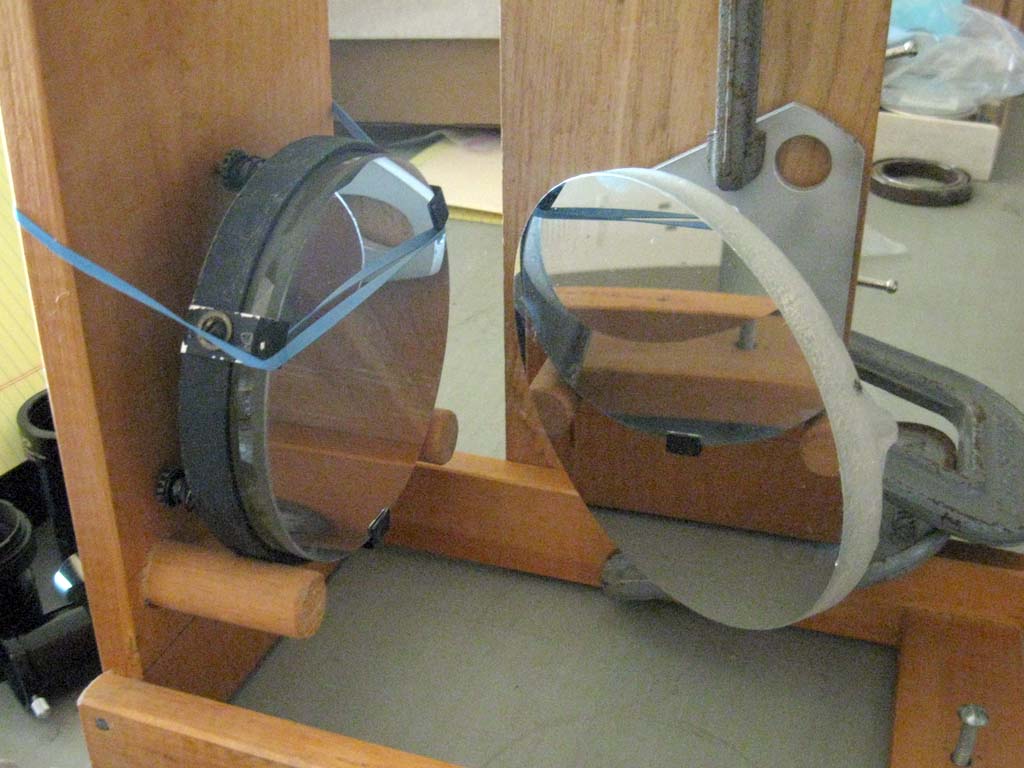
The focogram below shows the combined figures of the flat and the test sphere. The pattern shown is a mix of astigmatism (non-flatness) and other problems.
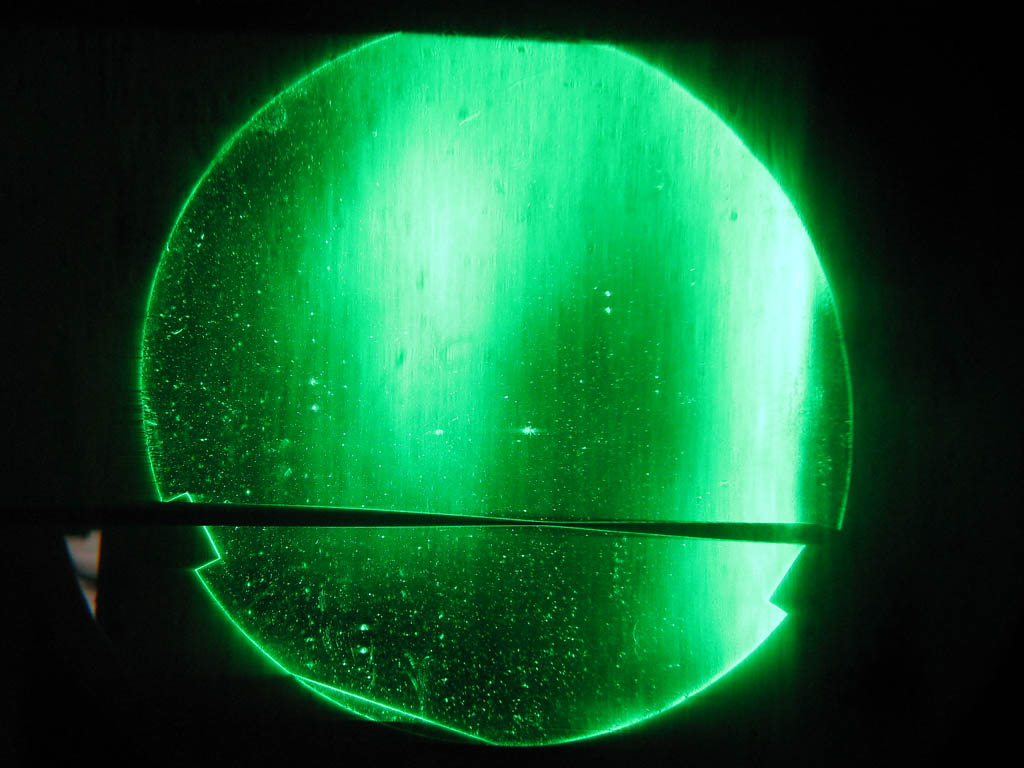
Conclusion: This test shows that the flat mirror is not flat. However, it was difficult to assess from this test how much this would affect the image of the telescope.
Secondary Mirror, Sky Testing
I did this test to get an appreciation of the amplitude of the aberration introduced by the non-flat secondary mirror. The idea was to examine star images reflected from the flat with a telescope of unimpeachable quality, in this case, my 6-inch f/15 achromatic refractor. To center the flat in the aperture of the telescope, I placed a bright flatlight in the focuser at focus. The mirror is quite nicely centered in the beam.
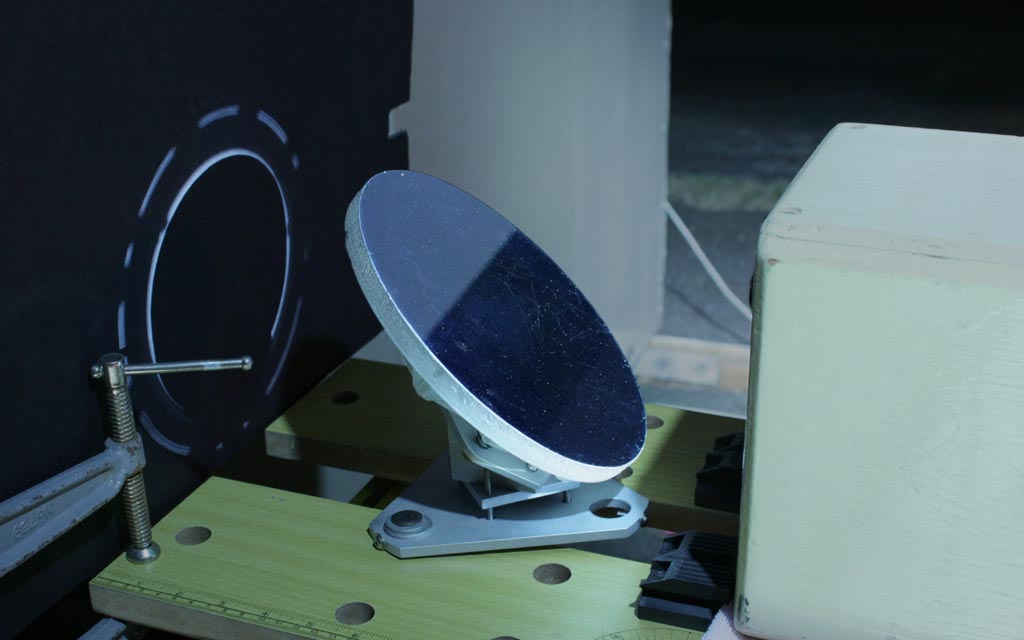
Below is the eyepiece end of the refractor. I viewed the star images with a 10 mm Radian eyepiece.
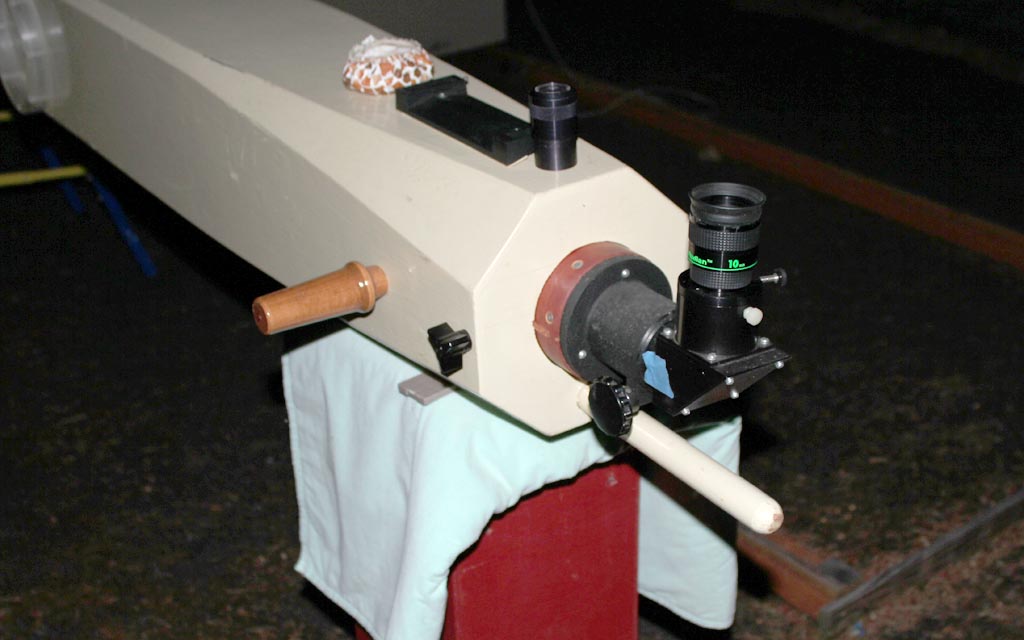
Below is the whole setup. I was able to swing the refractor through an arc of about five degrees to locate reasonably bright stars. This proved to be quite difficult even though Cygnus was crossing the zenith at the time I did the test. Nevertheless, I observed about a dozen stars brighter than eight magnitude, and they were astigmatically and asymmetrically distorted.

Conclusion: In this test, star images viewed at 225x were markedly non-round and flared by an estimated 5 arcseconds.
Finally, to prevent further destructive condensation on the mirror surface, I mounted a 20-watt incandescent lamp on a length of PVC tubing approximately 18 inches in front of the mirror. I leave this running whenever the telescope is not in use. My hope is that the infrared radiation from the lamp will be absorbed and will evaporate any water that condenses on the mirror -- but without heating the entire tube enough to delay cool-down in the evenings when I plan to observe.

In the longer term, I will replace the secondary mirror. In the short term, however, I will add a small fan in the secondary cage to circulate outside air over the mirror. This will cool the mirror to ambient quickly, and I hope it will allow the telescope to produce acceptably round and tight star images quickly.
This is Cal Poly Bulletin 13
Main CalPoly Bulletin page or go back to Bulletin 12
Return to Richard Berry's Home Page